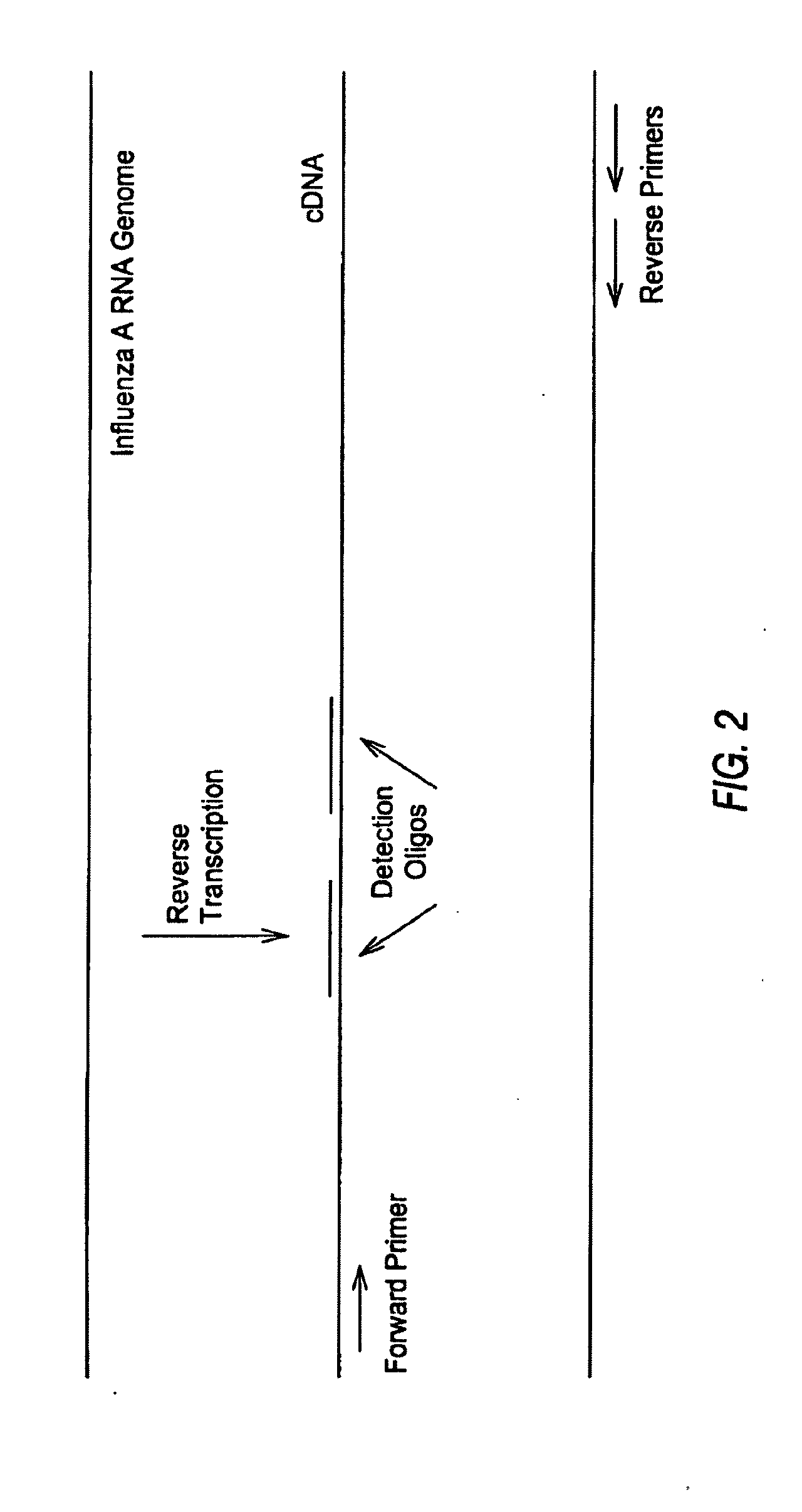100% sequence identity detection methods for variable genomes
a technology of variable genome and detection method, which is applied in the field of detection of influenza a virus variants with 100 % sequence identity, can solve the problems of severe human disease, inability to provide results in a time frame, and several long steps, and achieves the effect of increasing noise, high probability of detection, and high detection sensitivity of influenza a virus variants
- Summary
- Abstract
- Description
- Claims
- Application Information
AI Technical Summary
Benefits of technology
Problems solved by technology
Method used
Image
Examples
example 1
[0092]A ˜200 bp synthetic RNA corresponding to a portion of the influenza A matrix gene of interest (SEQ ID NO: 1) was generated by designing overlapping oligos and filling the ends with a 2 hours Taq polymerase extension at 37° C. The resulting double stranded template had a T7 RNA polymerase promoter on one end enabling the production of the synthetic RNA following a standard transcription reaction. The RNA template was quantitated on an Agilent 2100 Bioanalyzer to estimate an RNA copy number.
[0093]Reverse transcription PCR was carried out on 300-500 RNA copies, digested with RNAse-free DNAse I to ensure removal of ds DNA template, using Qiagen One-Step RT-PCR kit, according to manufacturer's instructions. Gel results confirmed transcription. The rt-PCR mix consisted of 0.2-0.4uM 5′ phosphorylated forward primer (SEQ ID NO: 2) and 5′ FAM labeled reverse primers (SEQ ID NOS: 5 and 6), 2 uM MgCl2, 1x rt-PCR mix, 0.1 mM dNTP, 10 units RNasin (Promega) and 5 units Qiagen enzyme mix, i...
PUM
| Property | Measurement | Unit |
|---|---|---|
| time | aaaaa | aaaaa |
| volume | aaaaa | aaaaa |
| length | aaaaa | aaaaa |
Abstract
Description
Claims
Application Information
 Login to View More
Login to View More - R&D
- Intellectual Property
- Life Sciences
- Materials
- Tech Scout
- Unparalleled Data Quality
- Higher Quality Content
- 60% Fewer Hallucinations
Browse by: Latest US Patents, China's latest patents, Technical Efficacy Thesaurus, Application Domain, Technology Topic, Popular Technical Reports.
© 2025 PatSnap. All rights reserved.Legal|Privacy policy|Modern Slavery Act Transparency Statement|Sitemap|About US| Contact US: help@patsnap.com



